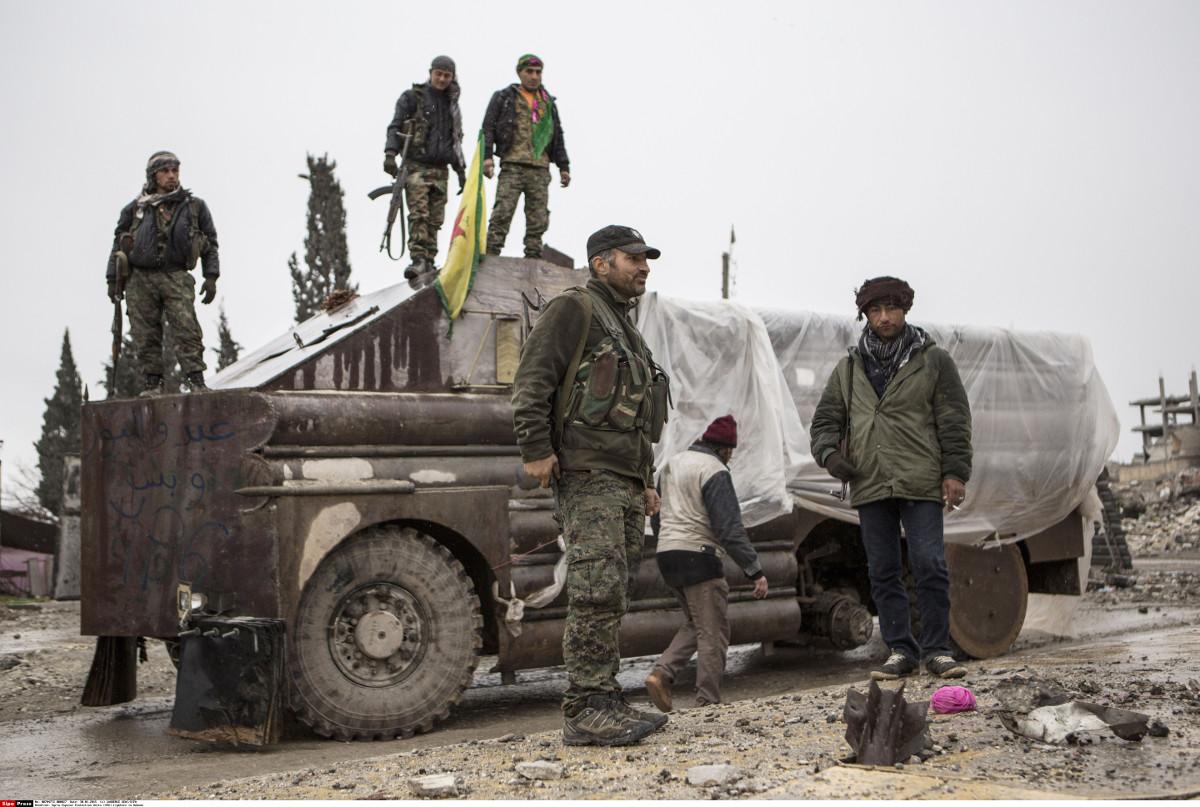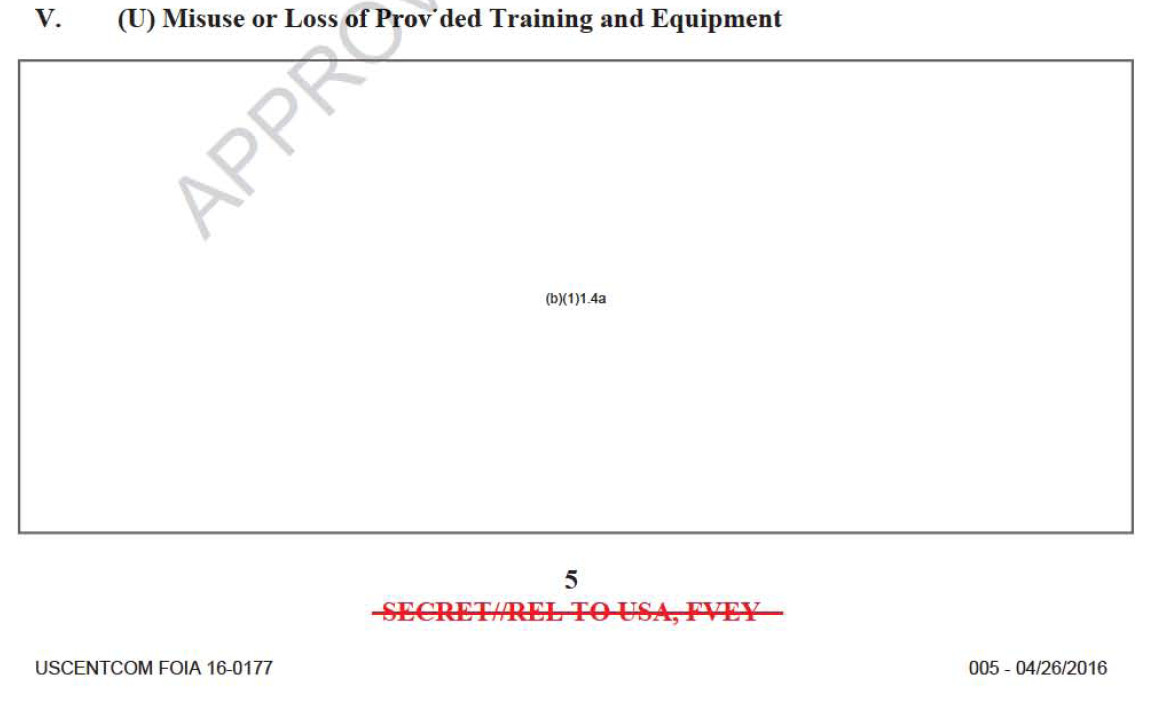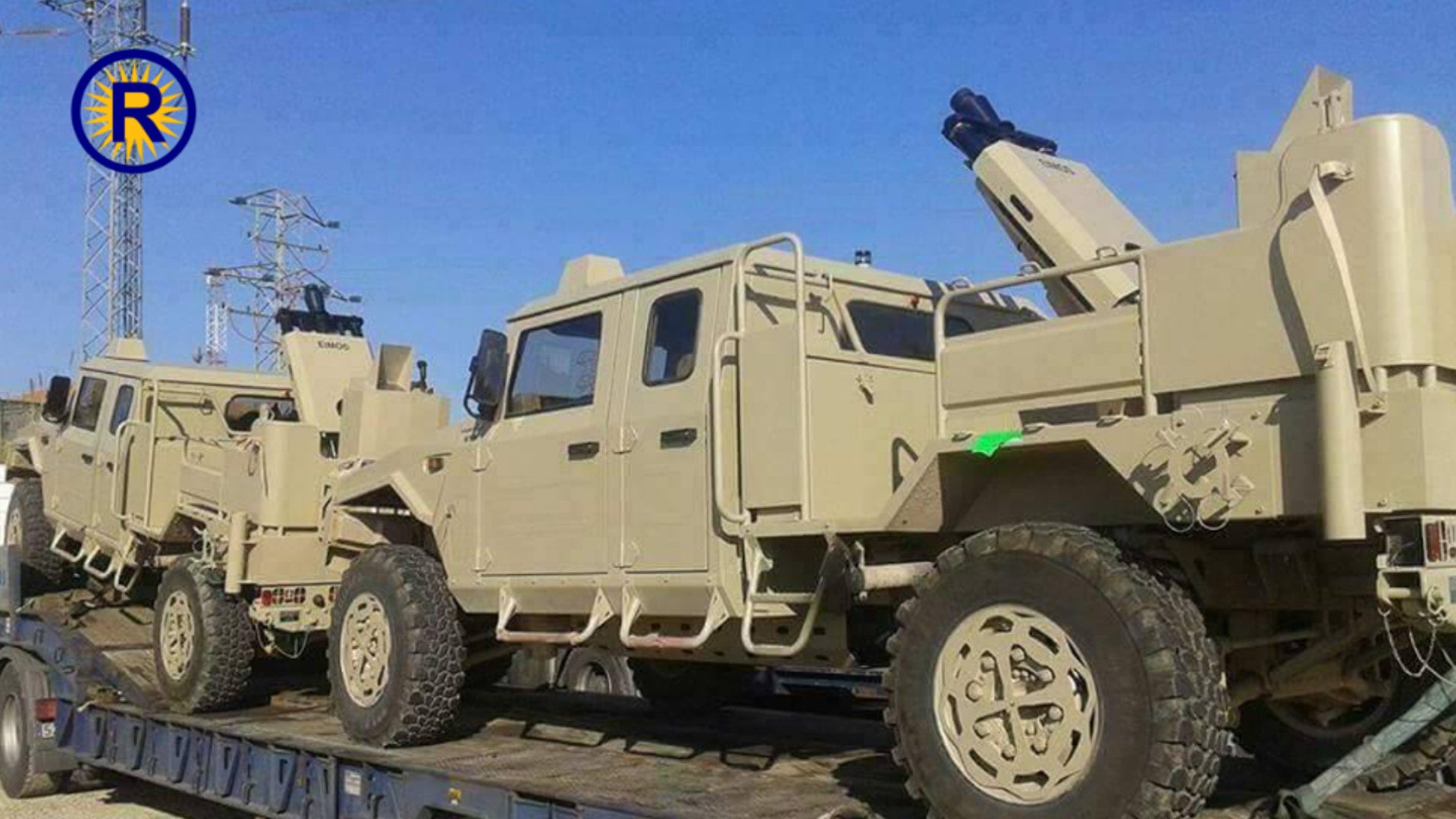Within 24 hours of President Donald Trump’s administration announcing America’s plans to arm Kurdish groups in Syria, deliveries of weapons and other equipment have begun arriving into the country’s northern region. The move is likely to further inflame tensions between the United States and its ally Turkey, which is just one facet of an increasingly complex situation, as The War Zone just covered in depth.
On May 9, 2017, the Trump Administration declared it was moving ahead with plans to support Kurdish rebels in northern Syria ahead of a assault on the city of Raqqa, ISIS’ de facto capital in the country. The organizations in question include the People’s Protection Units, more commonly referred to by their Kurdish Acronyms YPG and YPJ, which Turkish authorities view as terrorists. On May 10, 2017, images and video began to emerge on social media of the first batches of supplies moving into the region, which Kurds refer to a Rojava.
“We’ve got a certain amount of supply in the country already that was used to equip the Syrian Arab Coalition and some of that may be distributed very quickly,” U.S. Air Force Colonel John Dorrian, a spokesman for the U.S.-led coalition fighting ISIS in Iraq and Syria, told reporters on May 10, 2017. “Every single one of these weapons that will be provided to our partner forces will be accounted for and pointed at #ISIS. #defeatDaesh,” he later posted on Twitter, using another term to refer to ISIS terrorists.
The shipments will reportedly include heavy machine guns, mortars, anti-tank weapons armored vehicles, and gear to detect and jam improvised explosive devices (IED). Heavy machine guns would mean .50 caliber weapons such the U.S. Browning M2 or the Soviet DShK. Any anti-tank weaponry could include deliveries of the ever popular TOW missile, as well as other similar wire-guided types, which Syrian Arab and Turkmen rebels already employ to great effect.
Unconfirmed photographs of some of the new weapons included Spanish EXPAL Integrated Mortar System (EIMOS). Defense contractor EXPAL’s system consists of Uro VAMTAC 4×4 truck with a 60mm or an 81mm muzzle-loaded mortar on a recoil-absorbing mount. This combination provides an accurate and mobile fire support weapon ideal for light forces such as the YPG. Indirect fire support would be essential in any offensive into Raqqa and its suburbs, as already evidenced by the U.S. deployment of its own artillery units to the area to support ongoing operations. There were reports that American military aid to the YPG included heavier artillery, such as howitzers, but this may have been a misidentification of the EIMOS trucks.

Other video showed more mundane, but necessary equipment, including two-wheel trailers that light trucks such as a Humvee would be able to tow behind them. It may be some time before there is visual confirmation of all the supplies included in these aid packages.
And while the Pentagon has danced around the issue of how much support it’s given the YPG before now, the group has already been receiving more limited U.S.-supplied aid for years. In January 2017, pictures emerged on social media of YPG forces driving Guardian armored cars while fighting with the Arab-Kurdish Syrian Democratic Forces (SDF) militia. In what appeared to be an attempt to placate Turkey, the Pentagon denied the YPG had received the vehicles, saying that had gone instead to the Syrian Arab Coalition (SAC) component of the SDF.
“The coalition provided several Guardian armored vehicles to provide the Syrian-Arab Coalition with increased survivability from ISIL’s small arms and improvised explosive device threats,” Dorrian said at another press conference on Feb. 1, 2017. “The coalition will continue to bolster these fighters’ abilities with training, weapons and equipment as we have already done for more than 3,000 members of the SAC.

International Armored Group – which has offices in eight countries, including the United States, United Arab Emirates, and Turkey, all part of the U.S.-coordinated program to arm Syrian rebels to fight ISIS – makes the light armored vehicle, which is based on the Ford F550 Heavy Duty pickup truck chassis. The most common variant in Syria has small turret with a machine gun mounted on top of the armor-played body. YPG fighters have also been spotted traveling in unarmored pickup trucks, such as the ubiquitous Toyota Hilux.
Then, earlier in May 2017, the Pentagon again denied it had supplied weapons and equipment specifically to the YPG, according to a report by Military Times. The question came up after pictures appeared online of the Kurdish group’s fighters wearing American-made gear and carrying M4 carbines with accessories common to U.S. military units. More importantly, the individuals had helmets with AN/PVS-7B night vision goggles. Though these older systems are readily available for legal purchase online inside the United States, the U.S. government heavily restricts the export and sale of night vision and other image-enhancing equipment overseas.

It is possible that the YPG obtained this equipment in trade from its intended recipient or illicitly through the region’s expansive black market. The Central Intelligence Agency (CIA) may have been involved as well and did not respond to Military Times’ request for comment.
If the Kurdish fighters did obtain the systems without U.S. approval, it begs the question about how well the Pentagon will be able to enforce Dorrian’s claim that no weapons will go unaccounted for or pointed at unintended targets. Though the SDF, including its Kurdish and Arab components, definitely need more weapons and other supplies in order to eject ISIS from Raqqa, there is a real question about what happens when that campaign ends.
The author previously obtained reports regarding support for Syria rebels through the Freedom of Information Act (FOIA). Though the sections on “Misuse or Loss of Provided Training and Equipment” are entirely redacted, their shows that it is a real concern for American officials. In one particularly galling incident in September 2015, an early group of Western-trained rebels surrendered their equipment – including six pickup trucks – almost immediately to Al Qaeda fighters upon return to Syria.

And if Turkish officials follow through with its threats to attack YPG forces, it could easily break the chain of custody. Turkey insists the YPG and YPJ are linked to the Kurdish Worker’s Party, or PKK, in Turkey, which both it and the United States view as a terrorist group.
“We want to believe that our allies will prefer to side with us, not with a terrorist organization,” Turkish President Recep Erdogan told a reporters in Ankara on May 10, 2017. “Every weapon seized by them [the YPG] is a threat to Turkey,” Turkish Foreign Minister Mevlut Cavusoglu said during a separate televised press conference.
Since March 2017, American special operators have been trying to keep the peace between Turkey and the YPG, with varying degrees of success. Though their presence has prevented attacks in certain areas, Turkish aircraft still bombed Kurdish forces just six miles from where a group of U.S. troops was positioned in April 2017. It remains to be seen whether the newly armed Kurds will be able to continue their focus on Raqqa and ISIS or will have to split their attention between the terrorists and Turkish strikes.
Regardless, the U.S. decision to step up support to the YPG to include these heavy weapons is an important shift in policy that could have significant ramifications in the future.
Contact the author: joe@thedrive.com
